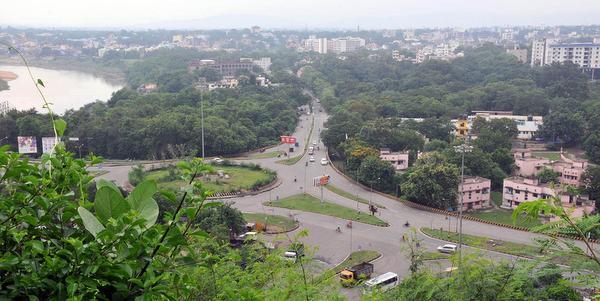
The potential of a lawn is vast, and we believe that responsible care is crucial. Just as the concept of modern cities evolves—from walkable and 15-minute cities to our favorite, sponge cities—so does the understanding of how to manage green spaces effectively.
Sponge cities are increasingly gaining attention in major publications like The Los Angeles Times and The New York Times. This concept is straightforward: sponge cities tackle climate change through thoughtful land use and design, focusing on increasing plant life, green spaces, and natural turfgrass rather than relying on impervious surfaces like concrete and asphalt. Much like a sponge, turfgrass and living plants absorb rainwater and heat, helping to manage stormwater and repurpose it naturally.
Why is there growing interest in sponge cities? As climate change and persistent droughts affect various regions, communities are reevaluating their water use and considering ways to conserve it. This has led some to view lawns as detrimental to water resources, advocating for their removal in favor of hardscapes. However, this perspective overlooks the benefits that living green spaces provide.
Sponge cities offer a more effective approach to mitigating climate change effects. Plants and turfgrass absorb water and support groundwater replenishment, whereas hard surfaces increase water runoff. Sponge cities also help counteract the urban heat island effect, where cities become significantly warmer than rural areas due to heat-absorbing surfaces.
Beyond their sponge city benefits, turfgrass offers additional environmental advantages, such as improving soil quality and converting CO2. A well-maintained lawn can absorb twice as much carbon annually as a tree does in a decade.
For homeowners, it’s important to recognize that the definition of a lawn is evolving. Replacing natural grass with artificial alternatives is not the most eco-friendly option. Instead, supporting living plants and diverse plant varieties in your yard can contribute to sustainability and help combat flooding and heat islands.
Options like clover, buffalograss, blue grama, sheep fescue, and dichondra provide low-maintenance, drought-tolerant ground cover alternatives. By incorporating these into your yard, you contribute to a mini sponge city at home.
In summary, sponge cities represent an effective strategy for addressing climate challenges, and we’re enthusiastic about their potential—though we also appreciate the merits of walkable and 15-minute cities.
Sponge cities are increasingly gaining attention in major publications like The Los Angeles Times and The New York Times. This concept is straightforward: sponge cities tackle climate change through thoughtful land use and design, focusing on increasing plant life, green spaces, and natural turfgrass rather than relying on impervious surfaces like concrete and asphalt. Much like a sponge, turfgrass and living plants absorb rainwater and heat, helping to manage stormwater and repurpose it naturally.
Why is there growing interest in sponge cities? As climate change and persistent droughts affect various regions, communities are reevaluating their water use and considering ways to conserve it. This has led some to view lawns as detrimental to water resources, advocating for their removal in favor of hardscapes. However, this perspective overlooks the benefits that living green spaces provide.
Sponge cities offer a more effective approach to mitigating climate change effects. Plants and turfgrass absorb water and support groundwater replenishment, whereas hard surfaces increase water runoff. Sponge cities also help counteract the urban heat island effect, where cities become significantly warmer than rural areas due to heat-absorbing surfaces.
Beyond their sponge city benefits, turfgrass offers additional environmental advantages, such as improving soil quality and converting CO2. A well-maintained lawn can absorb twice as much carbon annually as a tree does in a decade.
For homeowners, it’s important to recognize that the definition of a lawn is evolving. Replacing natural grass with artificial alternatives is not the most eco-friendly option. Instead, supporting living plants and diverse plant varieties in your yard can contribute to sustainability and help combat flooding and heat islands.
Options like clover, buffalograss, blue grama, sheep fescue, and dichondra provide low-maintenance, drought-tolerant ground cover alternatives. By incorporating these into your yard, you contribute to a mini sponge city at home.
In summary, sponge cities represent an effective strategy for addressing climate challenges, and we’re enthusiastic about their potential—though we also appreciate the merits of walkable and 15-minute cities.


 Why Sponge Cities Are the Future: Benefits of Green Spaces and Turfgrass
Why Sponge Cities Are the Future: Benefits of Green Spaces and Turfgrass




 Companies
Companies